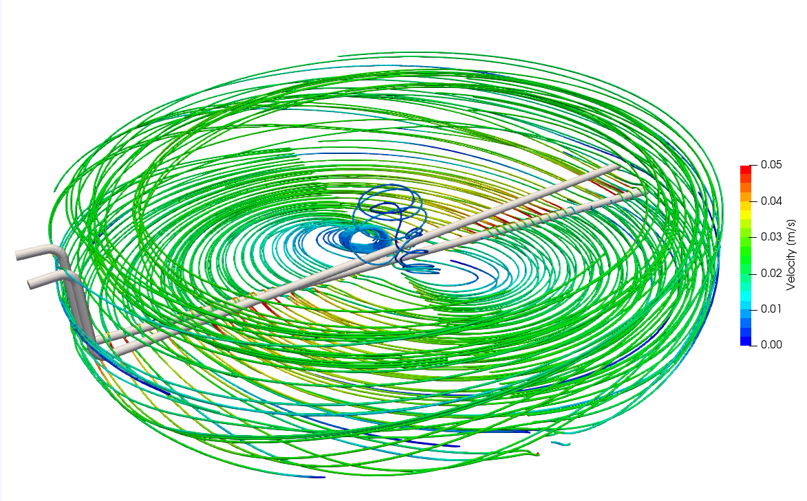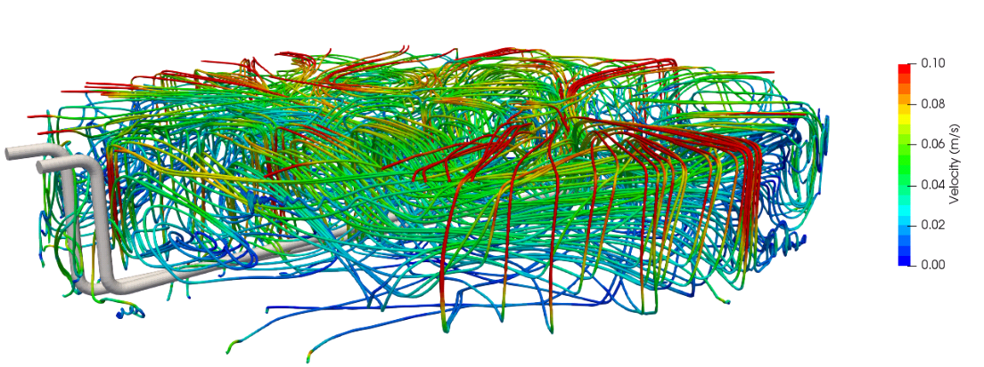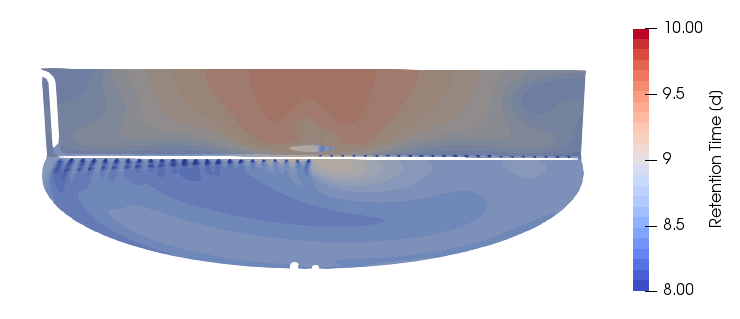Retention time in a fresh water tank in Saudi Arabia
Mattias Deller, 12. September 2018
The retention time in a fresh water tank has been modeled, using a thermo - hydraulic approach. It could be shown that the steel walls heated by the sun influence the circulation inside the water tank and that compared to a purely hydraulic simulation different retention times are to be expected.
About 50 to 60% of drinking water in Saudi Arabia is supplied by desalination plants. Many of these facilities are located on the Red Sea. Therefore large amounts of drinking water must be transported to the metropolitan areas. Along these transport routes, huge water tanks that serve as temporary storage or strategic reserve exist. If the drinking water remains in these tanks for a long time, the quality of the water can be dramatically reduced. According to WHO rules, the retention time may not be longer than 7 days. To ensure this requirement, the circulation in the water tank has to be optimized. The circulation arises from the inflow and removal, but also from thermally induced flows (density flow) along the outer wall of the tank. TK CONSULT AG was commissioned to determine the residence times of a planned water tank by means of a 3D-CFD calculation. In a first step hydraulic simulations for different inflow and outflow configurations were performed. Due to the warm climate in Saudi Arabia, thermally induced circulation is of great importance. Therefore, thermal - hydraulic simulations were performed with the same set-up.


